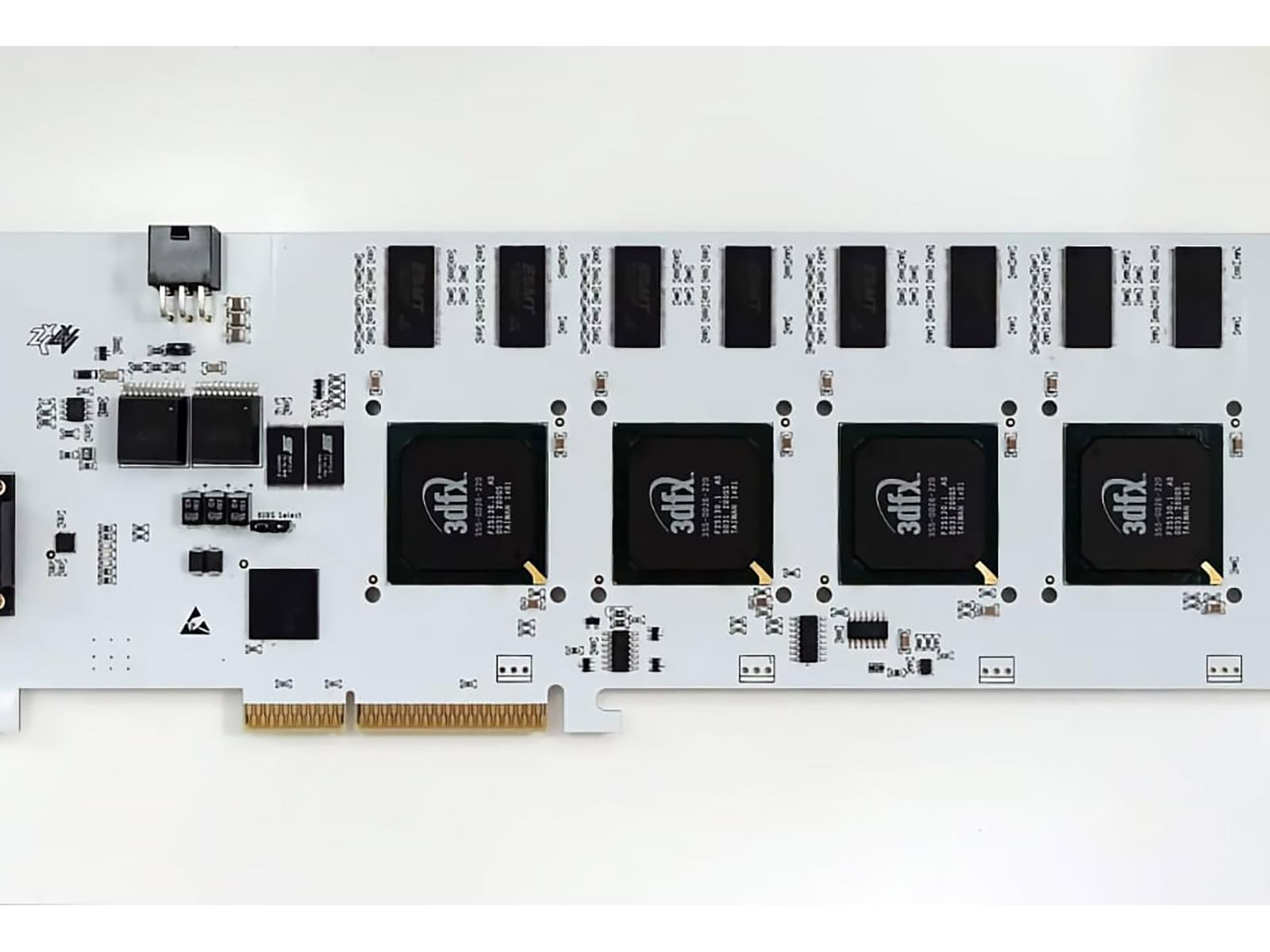GiGaBiTe
Veteran Member
It's worth it if you want to run 800x600. A normal 4 MB card doesn't have enough FBI memory to go above 640x480, or 512x384 for games that have a Z buffer.
| VCF West | Aug 01 - 02 2025, | CHM, Mountain View, CA |
| VCF Midwest | Sep 13 - 14 2025, | Schaumburg, IL |
| VCF Montreal | Jan 24 - 25, 2026, | RMC Saint Jean, Montreal, Canada |
| VCF SoCal | Feb 14 - 15, 2026, | Hotel Fera, Orange CA |
| VCF Southwest | May 29 - 31, 2026, | Westin Dallas Fort Worth Airport |
| VCF Southeast | June, 2026 | Atlanta, GA |
After Parhelia flopped I bought one for <$99 (was cheaper than whatever GF2 was then)I put my Voodoo 5 AGP back in its box when I was done with it (purchased new at bestbuy). I have a few Voodoo 1,2,3 cards purchased either new or on ebay a decade later. My Voodo 4 PCI was found in a free machine somebody gave me, and that is kinda rare.
There are a bunch of different Parhelia versions out there some of which are cut down. I wanted a PCI-X version for a long time but prices are stupid for them.
I miss the days of competing graphics chips and technology.
Same. Now its pretty much "what model of nvidia can you afford?" or "oh, all the RTXs have been snapped up by scalpers and cryptominers? Well, I guess I can use an AMD card for now..."
This is part of what drives me to the retro world. Old hardware is just more interesting.
If they would fix the $199 Intel 770 gpu to actually be capable of running/emulating compatibility with retro games they aren’t actually that terrible price/vrs performance at the moment now that the driver sets are somewhat AAA compatible
Just did a quick search on some site for prices, UK. You're up on this more than anyone else here on the forum.$200 for a Geforce GTX 1070 that came out in 2016 for $379 new is a bit much don't you think? The Radeon 5700 came out much later in 2019 but was also $349 new.
Lets go full crazy.I'm curious when people are going to start using FPGAs to emulate vintage graphics cards. There's already a thriving cottage industry cloning old sound cards. The GPUs are a bit tougher, but slap an FPGA on a board and in theory you could emulate any AGP card before a about the last few generations.

Fooling with PC's, old or new, sure beats scraping stamps and sorting through a pile of pennies for that 1909 Lincoln VDB. (been there done that) Have to admit, it takes up a little more room though.I just picked up a 1050ti for a desktop I built in 2013. It had a gtx 460 in it, and it would occasionally blue screen with an error which pointed to the video card, and started showing artifacts on the screen. I was surprised how much vendors are asking for older cards.
I used to build a new system every 2-3 years using 2nd tier parts, however 10 years ago I got out of gaming, and what I still run are older titles.
https://www.ebay.com/itm/323658511158Lets go full crazy.
I'd have to dig for the photo again but it popped up in my feeds last week that someone had completely bypassed emulating 3DFX silicon in an FPGA and opted to instead graft a chip onto a new card with a bridge and a PCI Express slot. No, this is not the guy who made a Voodoo5 work on a PCIe to AGP bridge board.
In fact, I've seen a LOT of repro 3DFX cards coming out lately that are using original 3DFX chips, so either they have access to a lot of unused tray chips or they are already actively stealing them from original boards rather than starting over from scratch.

